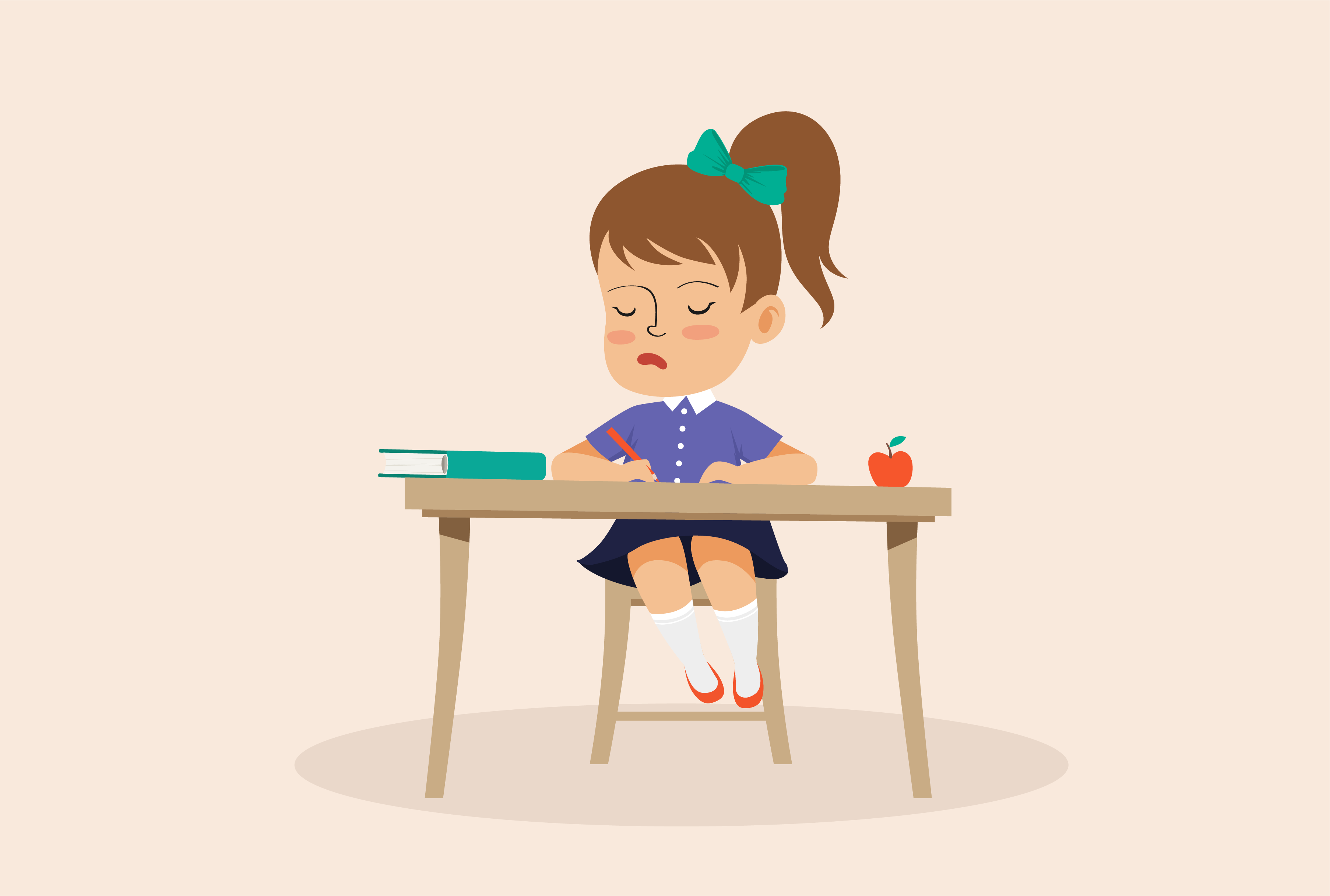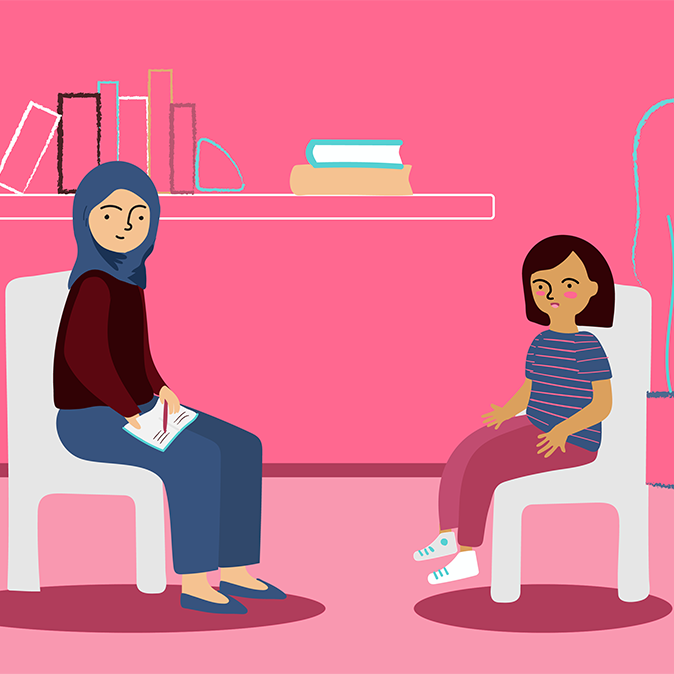Mental Health
How You Can Support Students With Anxiety at School
Small changes can go a long way.
When we think of anxiety, most people associate it with a temporary worry that we experience before a slightly stressful situation – think exams or interviews. What they don’t realize, however, is that anxiety is actually a recognized mental health issue that can affect people everyday, interfering with daily life.
Did you know 1 in 10 young people suffer from a mental health disorder and, of those mental health issues, anxiety is one of the most common?
Children are amongst one of the groups of people most affected by anxiety. It’s normal for children to feel worried or anxious from time to time like when they start a new school or move to a new area — but for some children, anxiety becomes an persistent feeling that affects their school, home and social life.
So, what is anxiety? Simply put, anxiety disorders cause significant worry and real fears that just won’t go away. Usually, individuals experience these feelings pretty much constantly day in day out, rather than only in specific situations.
It’s very common for children to develop anxiety after a stressful event. For teachers, it’s important to remain aware of these circumstances, so you can keep an eye on the child and make sure support is put in place at the earliest opportunity. The NHS highlights the most frequent causes:
- Regularly moving house or school
- Parents fighting or arguing
- The death of a close relative or friend
- Becoming seriously ill or getting injured in an accident
- School-related issues, like bullying or exams
- Being abused or neglected
Kids can experience many variations of anxiety — it could be separation anxiety (fear of being away from people close to them, such as parents), social anxiety (fear of being in social situations), or even panic disorder (experiencing sudden, unexpected panic attacks). Although there are different types of anxiety, the symptoms are similar and can often interfere with a student’s academic performance.
As teachers, you should keep a look out for the following warning signs:
- Finding it hard to concentrate
- Not eating properly
- Quickly getting angry or irritated
- Constantly worrying or having negative thoughts
- Feeling tense and fidgety
- Fear of talking in a group
- Panic attacks
- Using the toilet often
- Always crying
- Being clingy
- Complaining of tummy aches, headaches and feeling unwell
Just by looking at the above symptoms, it’s easy to see how anxiety can affect learning. One study found that anxious individuals find it hard to avoid distractions and need more time to turn their attention from one task to the next. For this reason, it’s important that teachers create calm, supportive and organized classrooms. Although anxiety is an identified medical condition and requires the help of trained professionals, there are a number of steps teachers can take to help curb the problem.
Children are amongst one of the groups of people most affected by anxiety.
For those students that have a real fear of social situations and speaking in front of others, try and think of alternative ways for them to participate. If you have asked students to deliver a presentation in front of the class, you can ask the anxious student to present only to you rather than the whole group. Think about your questioning methods too — asking closed questions that require only a ‘yes’ or ‘no’ answer, rather than open-ended questions which need longer responses, may be best for the pupil. You can also come up with a signal together that you’ll give before you want to ask them a question in class, such as a hand gesture. This gives them a heads-up that they’ll be expected to speak and gives them time to prepare. Students can still engage and participate, but there’s less pressure on them to speak in front of everyone for long periods of time. And, this way, you are able to slowly introduce the student to speaking in front of large groups, building their confidence up over time.


(c) Reset Fest Inc, Canada
If your anxious students struggle with concentration, you could alleviate disruptions by writing expectations for learning and behaviour clearly on the board, so they know exactly what’s required of them. For example: “Task 1: complete the three spellings on your sheet; task 2: write three sentences using these words.”
Make sure you set activities which include strict timings to keep children on track, but give them extra warning before moving on so they don’t become anxious about the timings. For instance, “you have 10 minutes to complete this, and then we will move on to this. I’ll make sure you’re ready to start the next task.” Check in frequently to assess their understanding so you can be sure they’re concentrating on the work you’ve set.
Seating in your classroom is important too. For anxious kids, being seated near the louder students can cause problems for several reasons. If their anxiety makes them shy and quiet, they may feel intimidated around these students. Or, their anxiety may make it hard for them to concentrate, so sitting next to the louder students — who may also get distracted easily — could only make things worse. In fact, it would be worthwhile asking the student’s opinion on where they want to sit, then you know they’re happy and comfortable with the arrangements.
Seating in your classroom is important.
There are plenty of other tips you can try. Allocating a buddy for the student could be helpful as they’ll have in-school support and a friend whenever they need it. You can also implement a ‘chill out pass’ that the child can use if they are feeling particularly anxious and need a break from the classroom. You could speak to the school librarian beforehand and let the student go to the library for a few minutes or for a walk around the hallway. Be inventive! There are many ways to help your student and give them confidence.


(c) Reset Fest Inc, Canada
Don’t forget that anxiety can often mean absences from school. It’s really important that any absences are managed effectively and kept on top of. Have discussions with the child and their parents after any absence to talk things through and see if you can do anything else to help them. Come to an understanding with the parent that they notify you in advance of the child’s absence if possible; this will give you time to email any lectures or assignments and help you plan the child’s academic progress. As with any time away from schools, making sure the pupil can catch up on any work they’ve missed so they don’t fall behind is key.
If you are able to, liaise with your school’s therapist or counsellor so they can speak to the student and arrange sessions to help manage the anxiety. The school therapist or counsellor will be able to offer a more medical approach and you can both work together to find the best ways to support the child.
Even if you don’t have any known anxious kids in your class or school, just making sure you know what to look out for means you can recognize where support may be needed. Whichever strategies you do try, always keep your student at the forefront by finding out what causes their anxiety — whether it’s social situations, fear of embarrassment, separation or a complete lack of confidence, be sure to focus on their specific needs.
Eleanor is a writer based in the UK who has a firm understanding of the education sector, with a focus on helping others to support the well-being and educational development of students. Follow Eleanor on Twitter.

























